Your basket is currently empty!
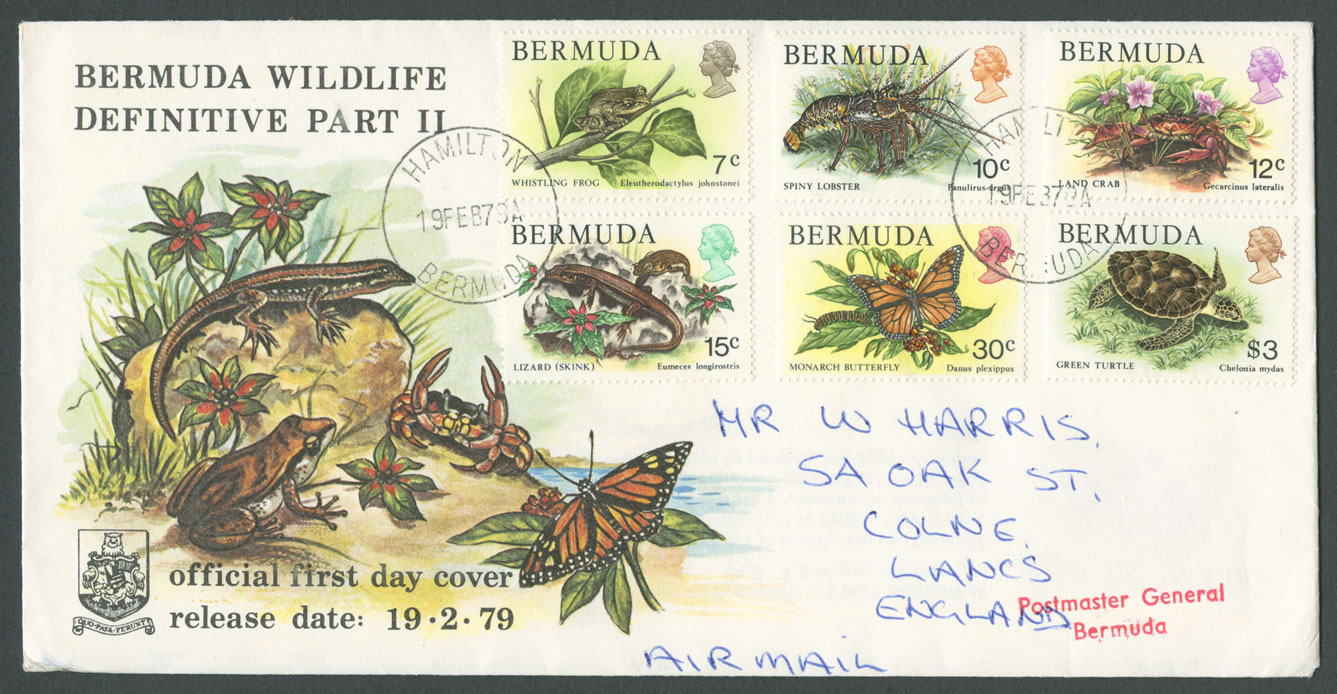
1979 Bermuda Wildlife Definitive Part II
Additional values for the wildlife definitives
Date: 19th February 1979
Stamps: 7c Whistling Frog Eleutherodactylus johnstonei; 10c Spiny Lobster Panlirus argus; 12c Land Crab Gecarcinus lateralis; 15c Lizard (Skink) Eumerces longirostris; 30c Monarch Butterfly Danus plexippus; $3 Green Turtle Chelonis mydas
Type: First Day Cover
CDS: 19FEB79B HAMILTON BERMUDA
Cachet: BERMUDA WILDLIFE DEFINITIVE PART II Official First Day Cover. Release date: 19.2.79
Address: Postmaster General Bermuda
Liner
BERMUDA WILDLIFE PART II
Theme: “Amphibians and Crustaceans”
Technical Details
Designer: Gordon Drummond
Printer: Harrison & Sons (High Wycombe) Ltd.
Process: Photogravure
No. of stamps per sheet: 50 (2 panes of 25)
Size of stamps: 28.45mm x 42.58mm
Paper: C.A. watermark
Release Date: 19th February, 1979
7c Whistling Frog Eleutherodactylus johnstonei
by David Wlngate, M.B.E., B.A.
The loud bell·like chorus of the diminutive but super-abundant whistling frog is one of the most characteristic night sounds of Bermuda between the months of April and November This frog was introduced to Bermuda accidentally – probably on imported orchids from the Lesser Antilles sometime prior to 1880. Whistling frogs do not require standing water for breeding but pass through their tadpole stage within the egg itself. Clusters of eggs are laid in damp situations among rotting vegetation or under stones.
10c Spiny Lobster Panulirus argus
by James Burnett-Herkes, Ph.D., Asst. Director, Fisheries, Bermuda Department of Agriculture & Fisheries
Although Bermuda is the northernmost extension of the range of Caribbean spiny lobsters, populations of this delicious crustacean are large enough here to support a small seasonal fishery. These lobsters spend most of the year living in caves or dens, in patch reefs in the day and at night they feed on shellfish, worms and the like among sea grasses adjacent to their dens. During the summer spawning season lobsters migrate off-shore to depths of 60 metres or more. Their complex life history includes fragile larval stages that drift in the ocean for 6 months and a subsequent growing period of 5 years before young lobsters reach maturity and Bermuda’s minimum legal fishing size.
12c Land Crab Gecarcinus lateralis
by David Wingate, M.B.E., B.A.
The native land crab is one of the most abundant denisons of Bermuda’s sandy coastal slopes, especially on the South Shore. Land crabs feed on grasses, weeds and leaf litter and live in burrows which they excavate with their pincers. In some areas, the ground is so riddled with these burrows that severe soil erosion occurs. Indeed, the characteristically bare and rocky nature of Bermuda’s immediate coastline is largely the result of land crab burrowing activities. Although the land crab is terrestrial in habit, it must return to the sea once a year to lay its eggs. This usually occurs at night in early July and often takes the form of a mass migration with many thousands of individuals going to the sea at the same time.
15c Bermuda Rock Lizard Eumeces longirostris
The rock lizard is a member of the skink family and has the distinction of being Bermuda’s only native non-flying, non-swimming terrestrial vertebrate. It was described as endemic – or unique – to Bermuda in 1860 by P.H. Pope, the Smithsonian herpetologist, and its fossil bones, dating back 300,000 years or more, have been found in Bermuda’s limestone caves.,
30c Monarch Butterfly Danus plexippus
by I.W. Hughes, PhD., M.B.E., Director, Bermuda Department of Agriculture & Fisheries
The monarch butterfly is one of only six species of butterflies resident in Bermuda. It is widely distributed in the world but is perhaps best known in North America where it engages in long migratory flights – southward in the fall, often culminating in massive over-wintering “roosts” in Florida, the Gulf States, Mexico and California and northward in less spectacular fashion in the spring. Strays from the fall migration frequently turn up in Bermuda. The caterpillar of the monarch, which is yellowishgreen with black bands, feeds on milkweed. On maturity, it changes into a green chrysalis with golden spots which hangs like an ornament from host plants and from which the beautiful butterfly emerges.
$3.00 Green Turtle Chelonia mydas
by James Burnett-Herkes, Ph.D.
Once an abundant food source for Bermuda’s early settlers this reptile was the subject of the Island’s first conservation law passed by Bermuda’s first Parliament in 1620. This and subsequent measures were unsuccessful in preventing the destruction of nesting colonies of turtles in Bermuda. Green turtles found at Bermuda today are itinerant individuals from the Caribbean or were brought from Costa Rica as eggs and incubated on beaches as part of a re-stocking experiment. Green turtles feed on sea grasses and any other marine life they can catch such as jelly fish, crustaceans and fishes. Turtles mature at a weight of about 200 lbs. and will crawl up on beaches at night to lay their eggs. All species of marine turtles are protected by Bermuda’s Fisheries Act and all have been the subject of research in recent years.
CDS: 19FEB79A HAMILTON BERMUDA
[hr]
CDS: 19FEB79A HAMILTON BERMUDA
Address: D.O. Ferrey
by
Tags:
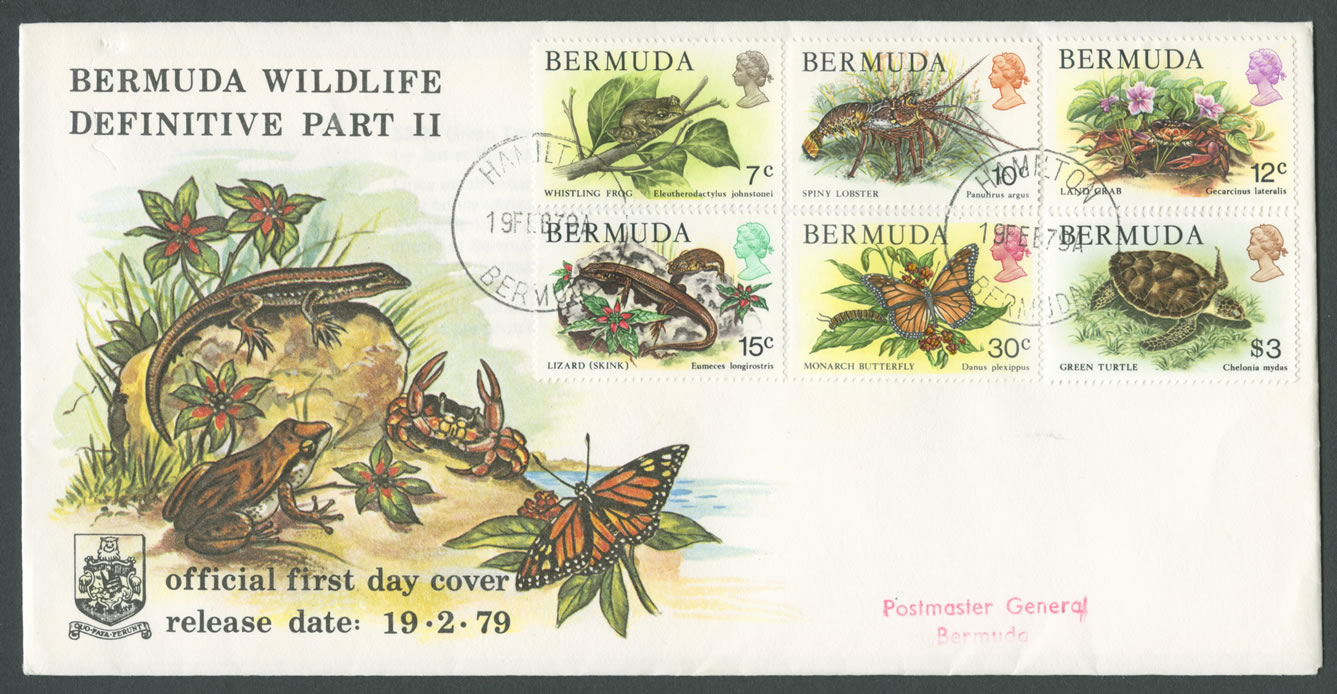
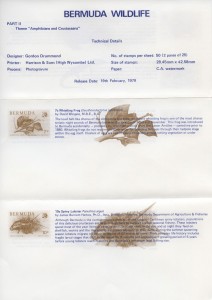
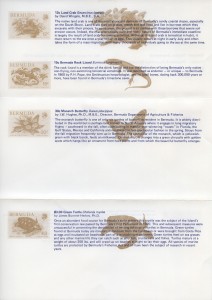
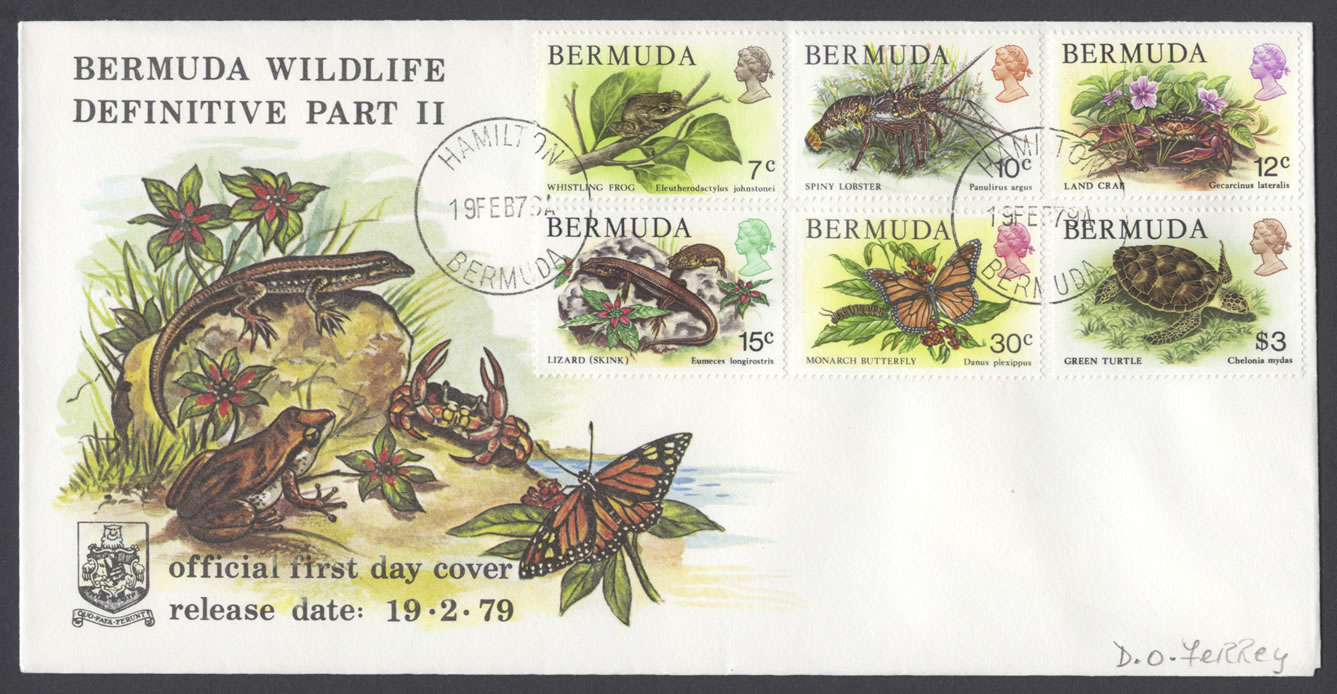
Leave a Reply
You must be logged in to post a comment.